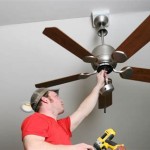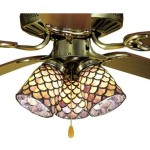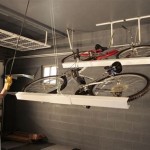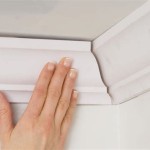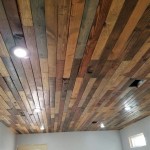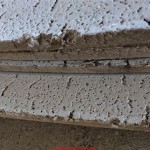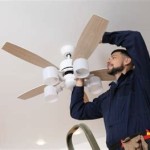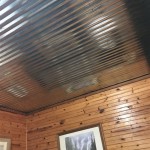Gypsum False Ceiling Design For Bedroom With Fan
The integration of a gypsum false ceiling with a fan in a bedroom necessitates careful planning and execution. This combination offers a multitude of benefits, including enhanced aesthetics, improved thermal comfort, and the ability to conceal wiring and other unsightly elements. However, it also presents specific design challenges that must be addressed to ensure optimal functionality and safety.
Gypsum, also known as calcium sulfate dihydrate, is a commonly used material for false ceilings due to its lightweight nature, ease of installation, and fire-resistant properties. It can be easily molded into various shapes and designs, allowing for significant customization. The incorporation of a fan within the gypsum false ceiling further complicates the design process, requiring consideration of load-bearing capacity, airflow dynamics, and accessibility for maintenance.
The primary objective when designing a gypsum false ceiling with a fan is to create a seamless integration that maximizes both the aesthetic appeal and the functional benefits of the two elements. This requires a comprehensive understanding of the structural requirements, electrical considerations, and design principles involved.
Key Considerations in Designing a Gypsum False Ceiling with a Fan
The successful implementation of a gypsum false ceiling with a fan hinges on several key considerations. These include structural integrity, fan placement and airflow, and electrical wiring and safety. Neglecting any of these aspects can lead to compromised functionality, potential safety hazards, or aesthetic shortcomings.
1. Structural Integrity and Load-Bearing Capacity: The false ceiling must be capable of supporting the weight of the fan and resisting vibrations. This is achieved through a robust framework, typically constructed from metal channels and hangers, that is securely attached to the main ceiling. The spacing and gauge of these support structures are crucial determinants of the ceiling’s load-bearing capacity. The specific weight of the fan, including any fixtures attached to it, must be factored into the calculation of the required support structure. It's advisable to consult with a structural engineer to ensure the design meets all relevant building codes and safety standards.
The gypsum boards, typically screwed onto the metal framework, contribute to the overall rigidity of the ceiling. The thickness and density of the gypsum boards should be appropriate for the span between supports, and the screws used to attach them should be of sufficient length and strength to ensure a secure connection. Special attention should be paid to the area immediately surrounding the fan mounting point, as this area will be subjected to the greatest stress. Reinforcements may be necessary in this region to prevent sagging or cracking of the gypsum boards.
2. Fan Placement and Airflow Dynamics: The placement of the fan within the false ceiling is critical for optimizing airflow and ensuring efficient cooling or ventilation. Ideally, the fan should be positioned centrally within the room to distribute air evenly throughout the space. However, room dimensions, furniture layout, and the presence of other architectural features may necessitate adjustments to the fan's location.
The height of the false ceiling also plays a significant role in airflow. A lower ceiling may restrict the fan's ability to circulate air effectively, while a higher ceiling may result in uneven air distribution. The optimal height will depend on the size of the room and the type of fan being used. It is crucial to consider the blade span of the fan and ensure that it has sufficient clearance from the surrounding walls and ceiling to operate safely and efficiently.
The design of the false ceiling itself can also influence airflow. Strategically placed vents or openings can help to direct airflow and improve ventilation. For example, creating an opening above the fan can allow warm air to rise and escape, while vents near the walls can promote the circulation of cooler air. Furthermore, the surface texture of the false ceiling can affect airflow; a smooth surface will generally result in less resistance and more efficient air circulation than a rough surface.
3. Electrical Wiring and Safety: Integrating a fan into a gypsum false ceiling requires careful planning and execution of the electrical wiring to ensure safety and compliance with electrical codes. All wiring must be concealed within the false ceiling cavity and properly insulated to prevent shorts or electrical hazards. The wiring should be routed away from any sharp edges or moving parts of the fan to avoid damage.
A dedicated electrical circuit with appropriate amperage should be installed for the fan to prevent overloading the existing circuits. It is highly recommended to use a licensed electrician to perform all electrical work, ensuring that it is done safely and according to code. The fan should be grounded properly to prevent electrical shock. The switch controlling the fan should be easily accessible and conveniently located.
Furthermore, access panels should be incorporated into the false ceiling design to allow for easy access to the fan motor and wiring for maintenance or repairs. These access panels should be large enough to accommodate the necessary tools and equipment, and they should be securely fastened to prevent accidental dislodgement. Fire-rated junction boxes are crucial for containing any potential electrical failures and preventing the spread of fire.
Aesthetic Considerations and Design Options
Beyond the functional aspects, the aesthetic design of the gypsum false ceiling with a fan is also crucial for creating a visually appealing and harmonious bedroom environment. The false ceiling can be used to incorporate various design elements, such as lighting, decorative moldings, and textured finishes, to enhance the overall aesthetic of the room.
Lighting Integration: Recessed lighting fixtures can be seamlessly integrated into the gypsum false ceiling to provide ambient, task, or accent lighting. The placement of these fixtures should be carefully considered to complement the fan and create a balanced and well-lit space. Dimmable lights can be used to adjust the lighting level to suit different moods and activities. The selection of lighting fixtures should also take into account energy efficiency and lifespan.
Decorative Moldings and Patterns: Gypsum's malleability allows for the creation of intricate decorative moldings and patterns on the false ceiling. These can add visual interest and architectural detail to the room. Options range from simple cornice moldings to elaborate geometric patterns. The choice of moldings and patterns should be consistent with the overall design style of the bedroom. The addition of cove lighting, hidden behind the moldings, can create a soft and diffused glow, adding to the ambiance of the room.
Color and Texture: The color and texture of the gypsum false ceiling can significantly impact the overall look and feel of the bedroom. Lighter colors can create a sense of spaciousness, while darker colors can add warmth and intimacy. Textured finishes can add depth and dimension to the ceiling. The color and texture should be selected to complement the wall colors, furniture, and other decorative elements in the room.
Maintenance and Longevity
To ensure the longevity and optimal performance of the gypsum false ceiling and fan, regular maintenance is essential. This includes cleaning the ceiling surface, inspecting the fan for signs of wear or damage, and addressing any issues promptly.
Cleaning the Gypsum Ceiling: Gypsum ceilings can be cleaned using a soft brush or vacuum cleaner with a brush attachment. Avoid using harsh chemicals or abrasive cleaners, as these can damage the surface of the gypsum board. Stains can be removed with a damp cloth and mild soap. It's crucial to address any water leaks promptly to prevent water damage to the gypsum ceiling.
Fan Maintenance: Regularly inspect the fan blades for dust accumulation and clean them with a damp cloth. Check the fan motor for any unusual noises or vibrations. Tighten any loose screws or bolts. Lubricate the fan motor according to the manufacturer's instructions. If the fan is not functioning properly, consult a qualified technician for repair or replacement.
Addressing Issues Promptly: Any signs of damage or deterioration to the gypsum false ceiling, such as cracks, sagging, or water stains, should be addressed promptly to prevent further damage. Similarly, any issues with the fan, such as a malfunctioning motor or loose blades, should be addressed immediately to ensure safety and optimal performance. Periodic inspections of the wiring and electrical connections are also recommended to prevent potential hazards.
By carefully considering these key aspects, it is possible to create a gypsum false ceiling with a fan that is both aesthetically pleasing and functionally efficient, contributing to a comfortable and stylish bedroom environment.

Pin By Hani On Home Simple Ceiling Design Bedroom False Interior

15 Impressive False Ceiling Designs With Fan For Modern Bedrooms

60 False Ceiling Design For Bedroom With Fan In 2025

60 False Ceiling Design For Bedroom With Fan In 2025

Gypsum Ceiling Designs Modern And Versatile Options For Your Home Sanideas Com

Bedroom Ceiling Design False Gypsum Home Decor Ideas

Bedroom Gypsum False Ceiling Designing At 95 Square Inch In Bengaluru Id 23973063148

Top 5 Bedroom False Ceiling Designs You Will Love Saint Gobain Gyproc

60 False Ceiling Design For Bedroom With Fan In 2025

Top 5 Bedroom False Ceiling Designs You Will Love Saint Gobain Gyproc
Related Posts

